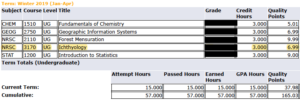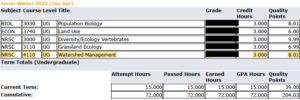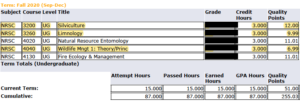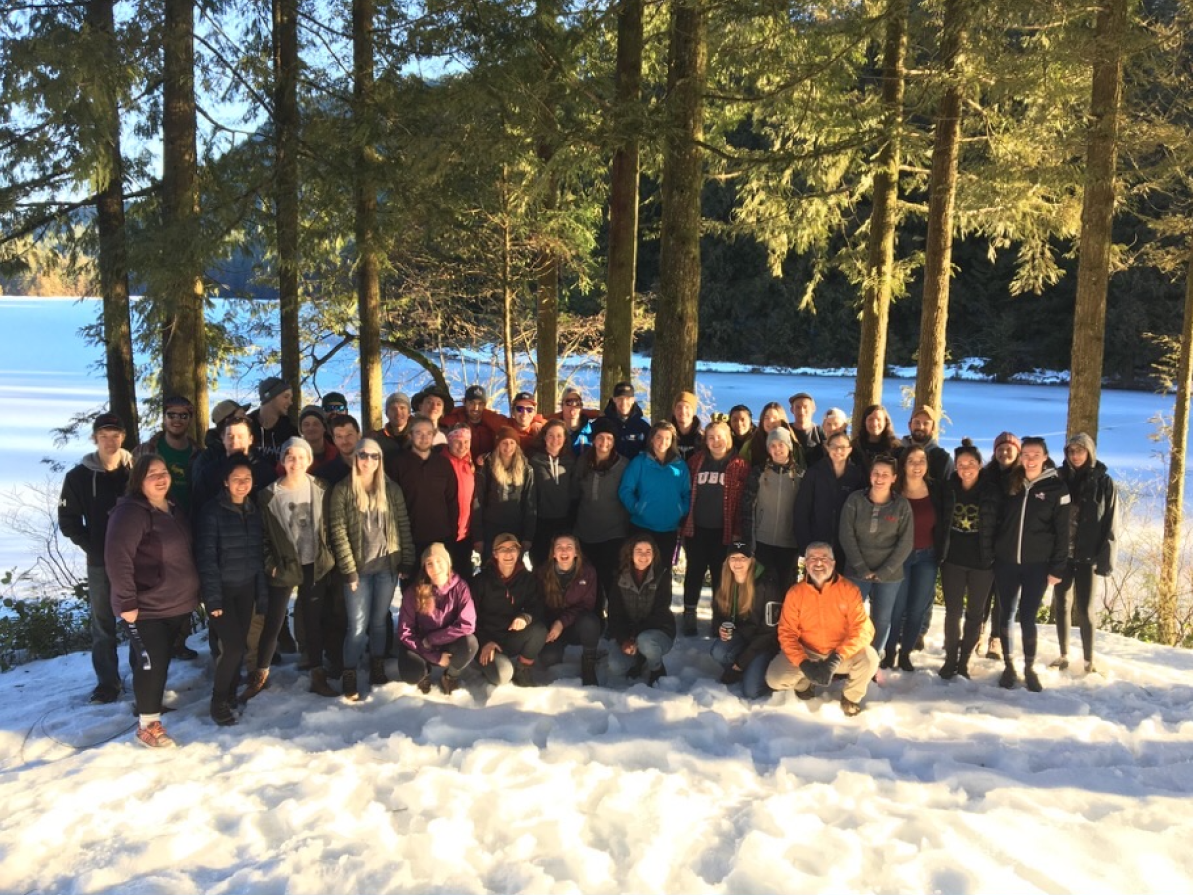NRSC 3170- Ichthyology
This course covered the systematics, anatomy, physiology, life history, and ecology of both freshwater and marine fishes. A large focus on the class was on B.C. salmon species and freshwater fisheries. We also covered topics on marine fishery techniques. Knowing the basis of all types of fishes allow us to understand how to sustainably manage their populations. Different techniques are needed to properly manage different species of fishes, and the technique used will be based on the area in focus. The course taught me both the unsustainable and sustainable techniques used by freshwater and marine fisheries in order to show how the industry is evolving. This course helped me understand that there are many ways we can make both freshwater and marine fisheries sustainable for many years to come. But with that, there is still lots of work to be done if we want to reach the goal of implementing completely sustainable fishery practices. It was during this course that I realized that I wanted to pursue working in fisheries and related areas of study.
NRSC 3200- Silviculture
We were taught silvicultural concepts and principles that applied to forest stand management and landscape level management in this course. We also discussed how economics, wildlife, biodiversity sustainability is connected to the concepts and principles taught. The type of forest stand management that is conducted on the land is based on many factors including the type of forest stand, the area under question, and who is implementing the management. This course taught me that forest stand management is much more than just harvesting trees. It emphasized the importance of sustainable forest practices in order to both allow harvesting to continue for economical reasons while preserving our forests and natural lands. I learned to understand that some seemingly unsustainable practices, like clearcutting, may be needed in certain situations in order to properly implement sustainable forest stand management practices in the future. The biggest lesson I took away from this course was how big of an impact sustainable forest management has on our ecosystems, our wildlife, and the future of the forestry industry.
NRSC 3260- Limnology
The main topics of this course included both the theoretical and applied aspects that are included in limnology. We learned how to understand the ecology of inland aquatic organisms (focusing on their physical, chemical and biological factors) and how those components all relate to their production and interactions. This course taught me that there are many factors that affect the biology of lakes and rivers. The largest takeaway from this course was the techniques we use in order to evaluate lake and river health. Once we know the biological state of these water bodies we can then evaluate what needs to be implemented in order to improve or retain their healthy state. Having healthy water bodies effect many aspects of our life and understanding these effects allow us to know how to manage this precious resource as sustainable as possible. Ensuring sustainable practices are used on lakes and rivers also ensure that we can properly manage other industries sustainably. This course furthered my interest in having a career in the aquatic biology field of study.
NRSC 4040- Wildlife Management 1: Theory and Principles
In this course we covered the history, theory, and principles of wildlife conservation and management, emphasizing on the current state of wildlife conservation and management. Learning the history of how wildlife management and conservation emerged was very important in understanding our current position in those areas of study. The largest takeaway from this course was how much research is still needed in order to obtain a full understanding of wildlife processes and our effect on these processes as humans. Wildlife plays a very large role in ecological systems and proper management of wildlife populations is instrumental in ensuring sustainability can be conducted in other fields of study. With the world evolving the way it is, such as increasing human populations, climate change, and a habitat being reduced for many species, it is more important now than ever to ensure we are using sustainable management practices. During this course I learned how large of an impact we have on wildlife populations and how it will take a global effort to ensure our wildlife populations are managed in sustainable ways.
NRSC 4110- Watershed management
This course introduced us to the basic principles of wildland hydrology and watershed management. We focused on how climate, physiology, and vegetation influence watershed function, how landuse effects streamflow quantity, timing, and water quality, and the techniques we use to monitor the impact of land management on our water resources. This course broadened my understanding of how important watersheds are to many other aspects of life. It reinforced that if we don’t sustainably manage our watershed we cannot manage any other ecological factor sustainably. The most important concept I learned in this course was how large of an impact climate change is having on our watersheds. It was this course that made me realize the importance of managing our watersheds sustainably in order to preserve them for future generations and that I wanted to hopefully take part in that work in my future career endeavours.
Courses in Environmental Sustainability Verifcation



